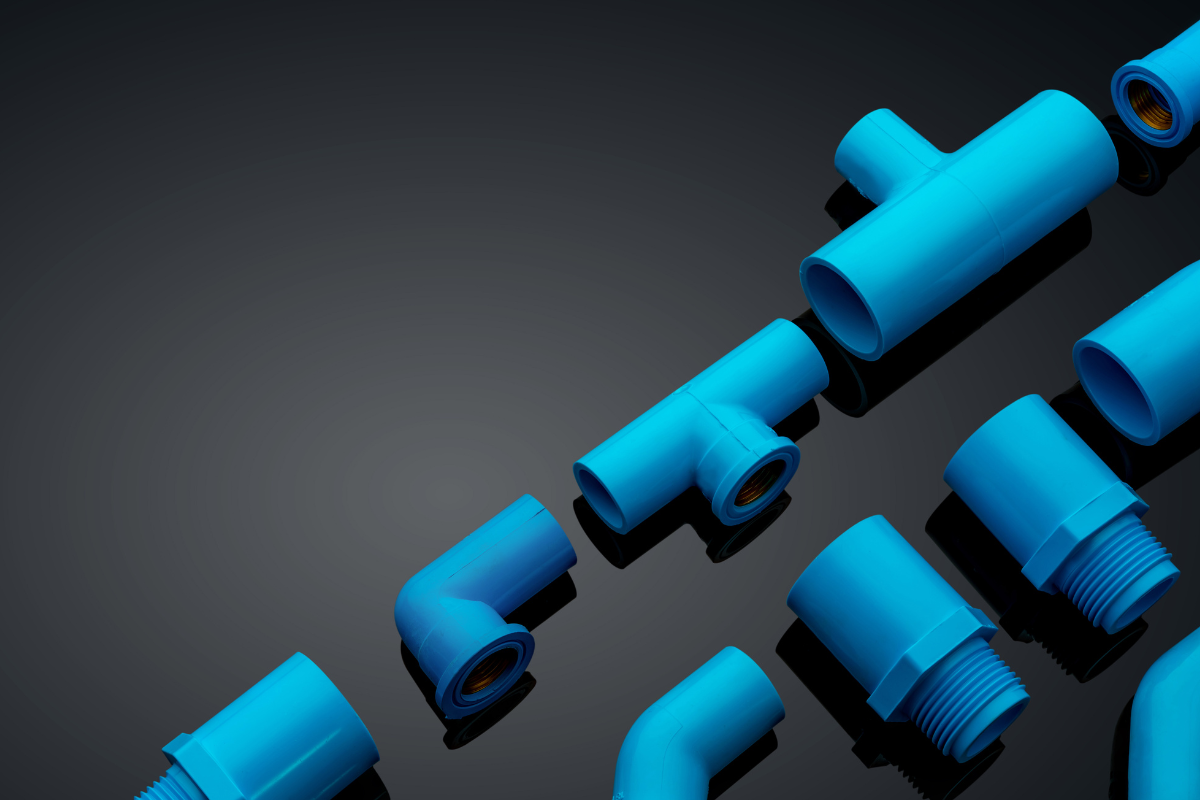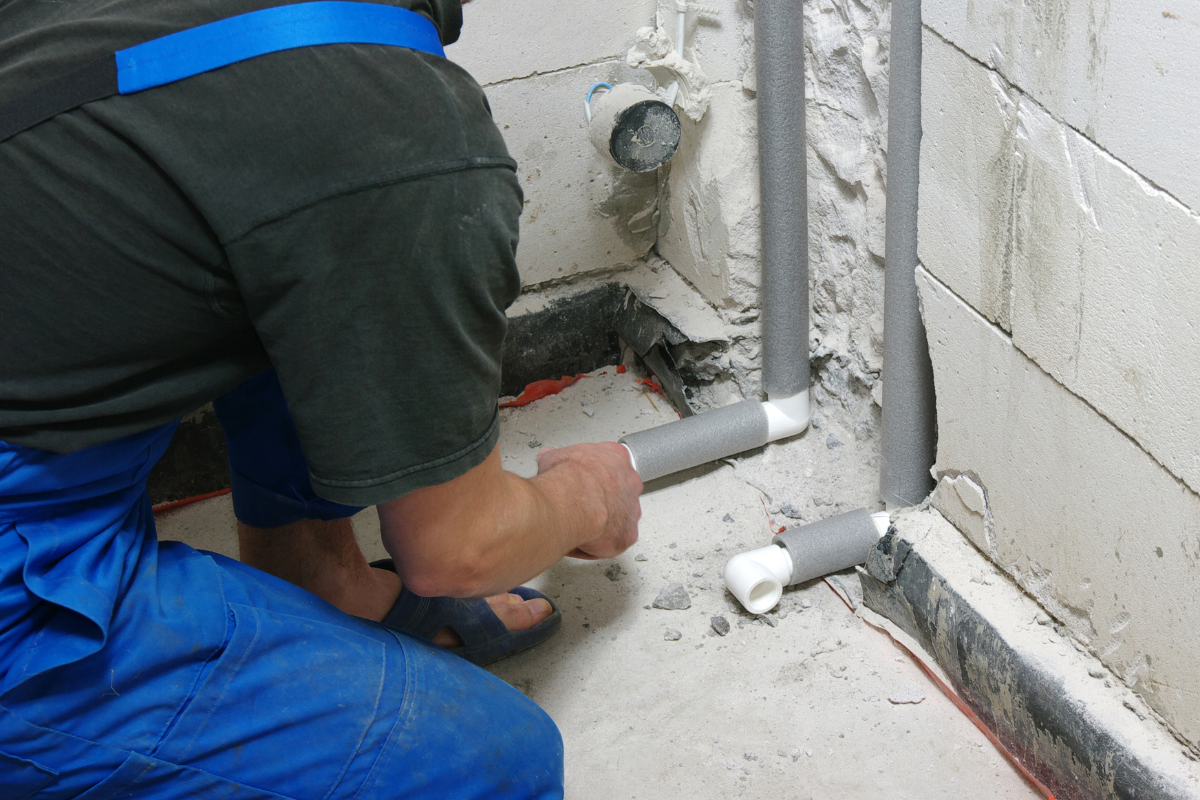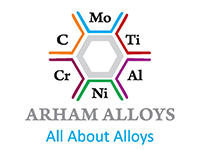Quick Summary – Key Quality Indicators
Essential Quality Markers:
- Chemical composition accuracy (±0.02% tolerance)
- Surface finish standards (2B, BA, EP grades)
- Dimensional precision (±0.5% diameter tolerance)
- Comprehensive NDT testing (UT, ECT, RT)
- ISO 9001 + industry certifications (ASME, API, PED)
Top Applications:
- Chemical & petrochemical processing
- Oil & gas offshore platforms
- Food & pharmaceutical manufacturing
- Marine & coastal installations
Why Choose Arham Alloys:
- Export-quality materials with full certifications
- Advanced testing facilities & documentation
- Quick delivery across India & international markets
- Technical expertise for grade selection
In today’s demanding industrial landscape, selecting premium stainless steel pipes is crucial for ensuring system reliability, longevity, and optimal performance. With countless suppliers and varying manufacturing standards in the market, identifying genuine quality indicators becomes essential for engineers, procurement professionals, and project managers. This comprehensive guide explores the key characteristics, testing methods, and certification requirements that distinguish superior quality SS pipes from inferior alternatives.
Understanding these quality indicators not only helps in making informed purchasing decisions but also prevents costly failures, reduces maintenance requirements, and ensures compliance with industry standards. Whether you’re working in chemical processing, oil and gas, pharmaceuticals, or food production, knowing how to evaluate pipe quality is fundamental to project success.
Understanding Premium Stainless Steel Pipe Fundamentals
Top-grade stainless steel pipes represent the pinnacle of metallurgical engineering, combining precise chemical composition, advanced manufacturing processes, and rigorous quality control measures. These pipes are designed to withstand harsh operating conditions while maintaining structural integrity and corrosion resistance throughout their service life.
The foundation of any superior quality SS pipe lies in its raw material selection and manufacturing process. Premium manufacturers source their raw materials from certified suppliers and employ advanced melting techniques such as Electric Arc Furnace (EAF) or Vacuum Induction Melting (VIM) to ensure chemical homogeneity and purity.
Quality also encompasses the entire manufacturing chain, from initial steel production through final inspection and testing. Premium stainless steel pipes undergo multiple quality checkpoints, ensuring that each stage meets or exceeds specified requirements before proceeding to the next phase of production.
Chemical Composition Standards for SS Pipes
Precise Chemical Analysis Methods
The chemical composition of superior quality stainless steel pipes must strictly adhere to specified standards such as ASTM, ASME, or EN requirements. Premium pipes undergo comprehensive chemical analysis using advanced spectroscopic techniques including:
- X-Ray Fluorescence (XRF) Analysis: Provides rapid, accurate elemental composition verification
- Optical Emission Spectroscopy (OES): Offers precise measurement of all alloying elements
- Combustion Analysis: Determines carbon, sulfur, nitrogen, and oxygen content
Grade Composition Comparison Table
| Grade | Chromium % | Nickel % | Molybdenum % | Carbon % | Applications |
| 304 | 18-20 | 8-10.5 | – | ≤0.08 | Food processing, general industrial |
| 304L | 18-20 | 8-12 | – | ≤0.03 | Welded constructions, chemical equipment |
| 316 | 16-18 | 10-14 | 2-3 | ≤0.08 | Marine, pharmaceutical, chemical |
| 316L | 16-18 | 10-14 | 2-3 | ≤0.03 | High corrosion resistance applications |
| 321 | 17-19 | 9-12 | – | ≤0.08 | High-temperature service, exhaust systems |
| 2205 | 21-23 | 4.5-6.5 | 2.5-3.5 | ≤0.03 | Oil & gas, offshore, chemical processing |
Each element must fall within tight tolerance ranges to ensure optimal performance. Deviations from these specifications can significantly impact corrosion resistance and mechanical properties.
Homogeneity and Segregation Control
Premium stainless steel pipes exhibit uniform chemical composition throughout their cross-section. Advanced manufacturing processes minimize segregation, ensuring that alloying elements are evenly distributed. This homogeneity is crucial for consistent performance and prevents localized weak points that could lead to premature failure.
Surface Quality Standards for Stainless Steel Pipes
Surface Finish Classifications
The surface finish of top-grade SS pipes significantly impacts their performance in various applications. Surface quality is typically classified according to roughness measurements and visual appearance:
Surface Finish & Tolerance Specifications Table
| Finish Type | Description | Roughness (Ra) | Typical Applications | Tolerance |
| 2B Finish | Cold-rolled, annealed, pickled | 0.1-0.5 μm | General industrial, architectural | Standard |
| 2D Finish | Cold-rolled, annealed, pickled (dull) | 0.5-1.0 μm | Non-critical applications | Standard |
| BA Finish | Bright annealed, mirror-like | 0.05-0.1 μm | Food, pharmaceutical, decorative | Premium |
| EP Finish | Electropolished, ultra-smooth | 0.02-0.05 μm | Sanitary, high-purity applications | Ultra-premium |
Surface Defect Quality Criteria
Superior quality stainless steel pipes must be free from surface defects that could compromise performance or appearance. Key quality indicators include:
- Absence of Pitting: No corrosion pits or surface irregularities
- Scratch-Free Surface: Minimal surface scratches within acceptable limits
- Uniform Color: Consistent surface coloration without discoloration patches
- No Scale or Oxidation: Clean surface free from heat treatment scale
Advanced surface inspection methods including automated optical scanning and dye penetrant testing ensure that only defect-free pipes meet quality standards.
Dimensional Accuracy and Tolerances
Precision Manufacturing Requirements
Dimensional accuracy is a hallmark of premium stainless steel pipes. Top manufacturers maintain tight tolerances that often exceed standard requirements:
Outside Diameter Tolerances:
- Standard pipes: ±1% of nominal diameter
- Premium pipes: ±0.5% or better
Wall Thickness Tolerances:
- Standard pipes: ±10% of nominal thickness
- Premium pipes: ±5% or better
Length Tolerances:
- Standard pipes: ±6mm
- Premium pipes: ±3mm
Straightness and Ovality Control
Superior quality SS pipes maintain excellent straightness and minimal ovality. Straightness is typically measured as maximum deviation per unit length, with premium pipes achieving straightness of 1mm per meter or better. Ovality, the difference between maximum and minimum outside diameter, should not exceed 1% of the nominal diameter.
Mechanical Properties of Top-Grade SS Pipes
Tensile Strength and Yield Properties
The mechanical properties of premium stainless steel pipes must meet or exceed specified minimum values:
Tensile Strength Requirements:
- 304 Grade: Minimum 515 MPa (75 ksi)
- 316 Grade: Minimum 515 MPa (75 ksi)
- 2205 Duplex: Minimum 655 MPa (95 ksi)
Yield Strength Requirements:
- 304 Grade: Minimum 205 MPa (30 ksi)
- 316 Grade: Minimum 205 MPa (30 ksi)
- 2205 Duplex: Minimum 450 MPa (65 ksi)
Impact Toughness and Ductility
Superior quality stainless steel pipes demonstrate excellent impact toughness and ductility, particularly at low temperatures. Charpy V-notch impact testing at various temperatures ensures the pipe can withstand shock loads and thermal cycling without brittle failure.
Elongation Requirements:
- Austenitic grades: Minimum 40% elongation
- Duplex grades: Minimum 25% elongation
Corrosion Tests for Stainless Steel Pipes
Accelerated Corrosion Testing Methods
Corrosion resistance is perhaps the most critical quality indicator for premium stainless steel pipes. Comprehensive testing programs evaluate resistance to various corrosive environments:
Pitting Resistance Equivalent Number (PREN): PREN = %Cr + 3.3(%Mo) + 16(%N)
Higher PREN values indicate superior pitting corrosion resistance:
- Grade 304: PREN ≈ 18-20
- Grade 316L: PREN ≈ 24-26
- Grade 2205: PREN ≈ 35-38
Standard Test Methods:
- ASTM G48: Pitting and crevice corrosion resistance
- ASTM G150: Electrochemical critical pitting temperature
- ASTM A262: Intergranular corrosion susceptibility
Environmental Stress Cracking Resistance
Top-grade stainless steel pipes must resist stress corrosion cracking (SCC) in chloride environments. Testing according to ASTM G36 or G123 standards evaluates resistance to chloride-induced SCC at elevated temperatures and stress levels.
NDT Testing Requirements for Quality Assurance
Ultrasonic Testing (UT) Methods
Every premium stainless steel pipe undergoes comprehensive ultrasonic testing to detect internal defects such as inclusions, voids, or laminations. Advanced UT techniques include:
- Straight Beam UT: Detects laminar defects parallel to the pipe surface
- Angle Beam UT: Identifies defects oriented at angles to the surface
- Immersion UT: Provides enhanced sensitivity for small defect detection
Eddy Current Testing (ECT)
Eddy current testing is particularly effective for detecting surface and near-surface defects in superior quality SS pipes. This method can identify:
- Surface cracks and fissures
- Wall thickness variations
- Material property changes
- Heat treatment inconsistencies
Radiographic Testing (RT)
For critical applications, radiographic testing provides detailed images of the internal structure of premium stainless steel pipes. Digital radiography offers improved sensitivity and faster processing compared to traditional film radiography.
Manufacturing Process Quality Indicators
Heat Treatment Verification
Proper heat treatment is essential for achieving optimal properties in top-grade SS pipes. Quality indicators include:
Solution Annealing Parameters:
- Temperature: 1040-1120°C (1900-2050°F)
- Rapid cooling to prevent carbide precipitation
- Verification through hardness testing and microstructural examination
Stress Relief (when applicable):
- Temperature: 400-450°C (750-850°F)
- Controlled cooling rate
- Residual stress measurement verification
Welding Quality for Welded Pipes
For welded premium stainless steel pipes, weld quality is critical. Quality indicators include:
- 100% Radiographic or Ultrasonic Testing of welds
- Proper Heat Affected Zone (HAZ) characteristics
- Absence of weld defects such as porosity, incomplete fusion, or cracks
- Post-weld heat treatment when specified
Certification Standards for SS Pipes
Material Test Certificates (MTC)
Superior quality stainless steel pipes are always accompanied by comprehensive material test certificates containing:
Chemical Composition Analysis:
- Heat analysis results
- Product analysis results (when applicable)
- Compliance with specification requirements
Mechanical Property Test Results:
- Tensile test results
- Hardness measurements
- Impact test results (when applicable)
Heat Treatment Records:
- Temperature and time parameters
- Cooling rate documentation
- Heat treatment certification
Third-Party Inspection and Certification
Premium manufacturers often engage third-party inspection agencies to verify the quality of their production. These inspections may include:
- Witness testing of mechanical properties
- Independent chemical analysis verification
- Dimensional inspection confirmation
- Surface quality assessment
Quality Management Systems
ISO 9001 and Industry Certifications
Manufacturers of top-grade stainless steel pipes typically maintain robust quality management systems certified to ISO 9001 standards. Additional industry-specific certifications may include:
- ASME Code Certification for pressure vessel applications
- API Certification for oil and gas applications
- PED Certification for European pressure equipment
- CRN Registration for Canadian applications
Statistical Process Control (SPC)
Advanced manufacturers employ statistical process control methods to ensure consistent quality in premium SS pipe production. SPC techniques include:
- Control charts for dimensional parameters
- Capability studies for critical characteristics
- Trend analysis for process improvement
- Real-time quality monitoring systems
Packaging and Handling Standards
Protective Packaging Methods
Superior quality stainless steel pipes require proper packaging to maintain their quality during transportation and storage:
Protection Methods:
- Plastic end caps to prevent contamination
- Protective wrapping to prevent surface damage
- Proper bundling and support to prevent deformation
- Moisture-resistant packaging for long-term storage
Identification and Traceability:
- Clear marking of grade and specifications
- Heat number identification
- Size and length markings
- Handling instructions
Economic Value of Premium SS Pipes
Total Cost of Ownership Analysis
While premium stainless steel pipes may have a higher initial cost, the total cost of ownership often favors premium products due to:
- Extended service life reducing replacement frequency
- Lower maintenance requirements
- Reduced downtime and operational disruptions
- Improved system reliability and performance
Performance Guarantees and Warranties
Reputable manufacturers of top-grade stainless steel pipes often provide performance guarantees and warranties that reflect their confidence in product quality. These may include:
- Material defect warranties
- Performance guarantees for specific applications
- Technical support and consultation services
- Replacement commitments for manufacturing defects
Frequently Asked Questions (FAQs)
Q1: How can I verify that I’m purchasing premium stainless steel pipes?
Look for comprehensive material test certificates (MTCs), proper certifications from recognized bodies, and documentation of all testing performed. Verify the manufacturer’s quality system certifications and request references from similar applications.
Q2: What surface finish is best for superior quality SS pipe applications?
The optimal surface finish depends on your application. For sanitary applications like food processing or pharmaceuticals, electropolished (EP) or bright annealed (BA) finishes are preferred. For general industrial use, 2B finish is typically adequate.
Q3: How important is chemical composition testing for top-grade pipes?
Chemical composition testing is crucial as it directly affects corrosion resistance, mechanical properties, and overall performance. Both heat analysis and product analysis should be performed and documented.
Q4: What NDT testing should be performed on premium stainless steel pipes?
Standard NDT includes ultrasonic testing for internal defects, eddy current testing for surface defects, and dimensional inspection. For critical applications, radiographic testing may be required.
Q5: How do mechanical properties indicate pipe quality?
Mechanical properties like tensile strength, yield strength, and elongation must meet or exceed specification minimums. Premium pipes often exceed these minimums significantly.
Q6: What certifications should I look for when buying superior quality SS pipes?
Look for ISO 9001 quality system certification from the manufacturer, plus any application-specific certifications like ASME, API, PED, or CRN. Material test certificates (MTCs) should comply with EN 10204 Type 3.1 or equivalent standards.
Q7: How does manufacturing process affect stainless steel pipe quality?
The manufacturing process significantly impacts quality. Seamless pipes generally offer superior quality compared to welded pipes due to uniform structure. Proper heat treatment and precision manufacturing equipment contribute to higher quality.
Q8: What should I consider when evaluating the cost of premium pipes?
Consider total cost of ownership rather than just initial purchase price. Factor in expected service life, maintenance requirements, downtime costs, and replacement frequency.
Q9: How can I ensure proper handling and storage of top-grade SS pipes?
Store pipes in clean, dry environments away from carbon steel contamination. Use protective end caps and wrapping to prevent surface damage. Maintain proper identification and traceability throughout handling.
Q10: What warranty should I expect with premium stainless steel pipes?
Reputable manufacturers typically offer material defect warranties and may provide performance guarantees for specific applications. Look for suppliers who stand behind their products with comprehensive warranty coverage.
Conclusion
Identifying and specifying premium stainless steel pipes requires comprehensive understanding of multiple quality indicators ranging from chemical composition and mechanical properties to surface finish and certification requirements. The investment in superior quality pipes pays dividends through improved reliability, extended service life, and reduced total cost of ownership.
By focusing on these key quality indicators and working with reputable manufacturers who maintain rigorous quality control systems, you can ensure that your stainless steel pipe selection will meet or exceed performance expectations throughout its service life. Remember that quality is not just about meeting minimum specifications – it’s about consistently delivering superior performance that justifies the investment.
The complexity of modern industrial applications demands nothing less than the highest quality materials. When system failure is not an option and performance standards are non-negotiable, choosing premium stainless steel pipes based on these comprehensive quality indicators becomes not just important, but essential for project success.
For applications requiring the highest quality standards and complete confidence in material performance, you can find top-quality premium stainless steel pipes at Arham Alloys. Their commitment to excellence, comprehensive testing programs, and proven track record of delivering superior stainless steel solutions make them the trusted choice for critical applications across diverse industries. Contact us now!








